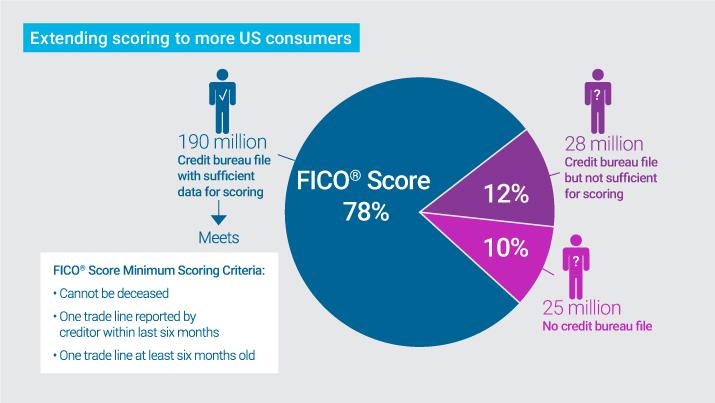In the intricate world of finance, where numbers dance across spreadsheets and fortunes hang in the balance, the ability to predict credit risk stands as a beacon of foresight and security. Imagine navigating this complex landscape armed with a toolset that transforms raw data into insightful narratives about a company’s financial health. This is the power of financial ratios—those seemingly simple fractions that hold the key to unlocking a deeper understanding of creditworthiness. As we delve into the art and science of financial ratios, we uncover how these numerical indicators can act as a crystal ball, offering a glimpse into the future stability and reliability of potential borrowers. With an authoritative lens, this article explores the vital role financial ratios play in predicting credit risk, equipping you with the knowledge to make informed decisions in an ever-evolving economic environment.
Decoding the Financial Health of Borrowers
In the intricate world of finance, understanding a borrower’s financial health is akin to reading a complex map that guides lenders through the maze of credit risk. Financial ratios serve as the compass, offering crucial insights into a borrower’s ability to meet their financial obligations. Liquidity ratios, such as the current ratio and quick ratio, assess a borrower’s ability to cover short-term liabilities with their most liquid assets. This snapshot of financial agility is vital for lenders who need assurance that borrowers can handle unexpected expenses or downturns.
Moreover, solvency ratios provide a long-term perspective by evaluating a borrower’s ability to sustain operations and repay long-term debt. Key ratios like the debt-to-equity ratio and interest coverage ratio reveal the balance between borrowed funds and the borrower’s own equity, offering a window into financial stability. When these ratios are meticulously analyzed, they become powerful tools that help lenders mitigate risk, ensuring that the flow of credit is directed towards borrowers with robust financial foundations. By integrating these metrics into their evaluation processes, lenders can transform raw data into strategic insights, enhancing their decision-making prowess.
Key Ratios That Signal Potential Credit Hazards
When assessing the financial health of a company, certain ratios stand out as harbingers of potential credit risks. These key indicators serve as vital tools for investors and creditors alike, offering a glimpse into the company’s ability to meet its financial obligations. Liquidity ratios, such as the current ratio and quick ratio, are crucial in determining a company’s capacity to cover short-term liabilities with its short-term assets. A low liquidity ratio might suggest that the company is struggling to manage its cash flow, posing a risk to creditors.
Another critical metric is the debt-to-equity ratio, which provides insight into the company’s financial leverage. A high ratio indicates that a company is heavily reliant on debt financing, which could be a red flag if the company faces declining revenues or increasing interest rates. Additionally, the interest coverage ratio measures how easily a company can pay interest on its outstanding debt. A declining interest coverage ratio might signal that the company is inching towards financial distress. These ratios, when analyzed collectively, can paint a comprehensive picture of potential credit hazards, guiding stakeholders in making informed decisions.
Leveraging Ratio Analysis for Proactive Risk Management
In the realm of financial analysis, ratios serve as powerful tools for identifying potential credit risks before they escalate into significant issues. By examining key financial ratios, businesses can proactively manage and mitigate risks associated with credit. Liquidity ratios, such as the current ratio and quick ratio, provide insights into a company’s ability to meet short-term obligations, indicating potential cash flow problems. Leverage ratios, including the debt-to-equity ratio, reveal the extent of a company’s financial leverage, highlighting the risk of over-reliance on debt financing.
Beyond liquidity and leverage, profitability ratios like the return on assets (ROA) and return on equity (ROE) offer a glimpse into the efficiency and effectiveness of a company’s operations. A declining ROA or ROE might signal underlying operational issues that could affect creditworthiness. Additionally, efficiency ratios, such as inventory turnover and receivables turnover, can uncover inefficiencies in asset management that might lead to liquidity constraints. By regularly monitoring these ratios, businesses can detect early warning signs of credit risk, allowing for timely interventions and strategic adjustments to safeguard financial health.
Crafting a Robust Credit Risk Mitigation Strategy
In the intricate landscape of financial management, understanding and predicting credit risk is paramount. Financial ratios serve as a powerful lens through which potential credit risks can be assessed with precision. By leveraging these ratios, businesses can anticipate challenges and fortify their financial strategies. Key financial ratios that play a pivotal role in this analysis include:
- Liquidity Ratios: These ratios, such as the current ratio and quick ratio, provide insights into a company’s ability to meet its short-term obligations. A strong liquidity position indicates a lower risk of default.
- Leverage Ratios: Metrics like the debt-to-equity ratio help in understanding the extent of a company’s financial leverage. High leverage may signal potential credit risk, as it suggests greater reliance on borrowed funds.
- Profitability Ratios: Ratios such as return on assets (ROA) and return on equity (ROE) offer a glimpse into the company’s efficiency in generating profits relative to its resources. Robust profitability often correlates with a reduced credit risk.
By meticulously analyzing these ratios, financial analysts can craft a strategy that not only mitigates risk but also enhances the resilience of their financial portfolio. Such a strategy empowers businesses to navigate the complexities of credit risk with confidence and foresight.





